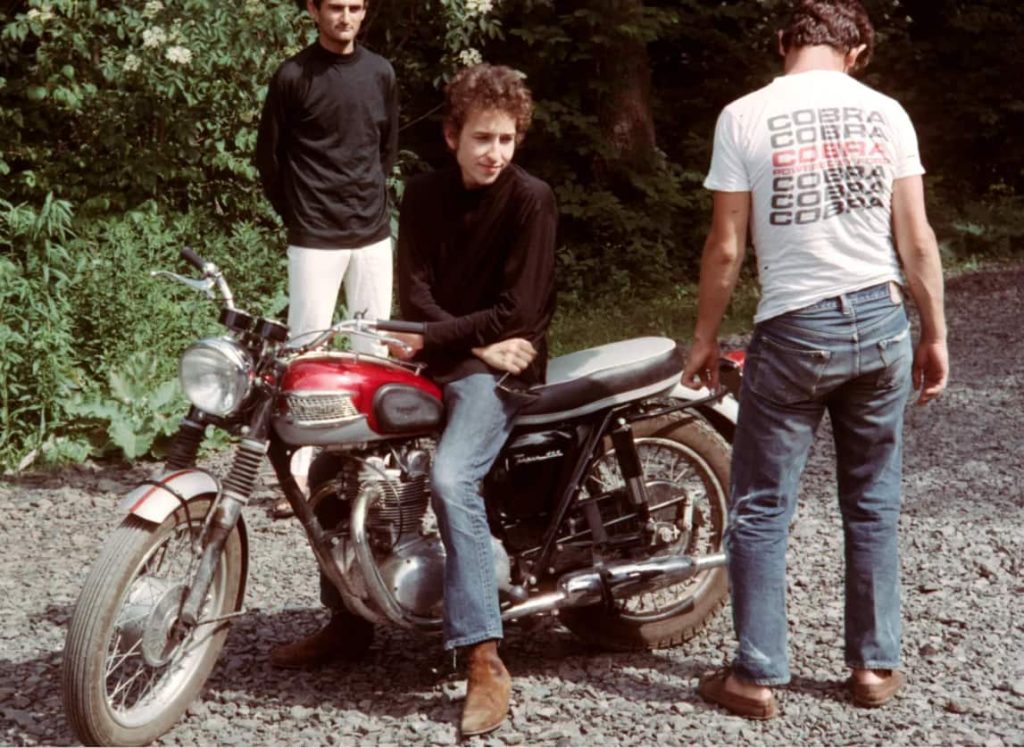
A Surreal, Hillbilly-Infused Fever Dream, Set to a Twangy Beat: Bob Dylan’s “Motorpsycho Nightmare”
Ah, Bob Dylan. A name that conjures up a thousand images, a thousand lyrical twists, and a thousand shades of American musical history. In 1964, nestled within the playful, albeit pointed, landscape of his album “Another Side of Bob Dylan,” we find the delightfully bizarre “Motorpsycho Nightmare.” While it didn’t storm the charts in the traditional sense, never charting as a single, its presence on the album solidified its place in Dylan’s evolving repertoire, a testament to his willingness to experiment and subvert expectations. It’s a song that’s less about a direct message and more about a wild, stream-of-consciousness ride, a surreal narrative that blends slapstick comedy with a touch of the unsettling.
The story, if one can call it that, unfolds like a fever dream. Dylan, our narrator, finds himself seeking shelter from a storm at a farmhouse occupied by a family that bears a striking resemblance to characters from the classic sitcom, “The Beverly Hillbillies.” What ensues is a chaotic blend of mistaken identity, romantic misadventures, and a healthy dose of paranoia. He mistakes the daughter for Brigitte Bardot, is chased by the patriarch, and ultimately flees into the night. It’s a narrative that’s less concerned with linear logic and more invested in capturing the disorienting, dreamlike quality of a surreal experience.
The song’s meaning, then, is less about a concrete message and more about the feeling it evokes. It’s a playful jab at the absurdity of social interactions, a commentary on the clash between urban and rural cultures, and a glimpse into the restless, imaginative mind of a young Dylan. The “motorpsycho” element, one could argue, represents the chaotic, unpredictable nature of life itself, the sense that we’re all just trying to navigate a world that often feels like a bizarre, unpredictable ride. The song’s twangy, almost hillbilly-esque musical arrangement adds to the sense of playful anarchy, creating a sonic landscape that perfectly complements the lyrical absurdity.
For those of us who remember the era, “Motorpsycho Nightmare” is a reminder of a time when music was less about polished production and more about raw, unbridled creativity. It’s a testament to Dylan’s ability to take the mundane and transform it into something magical, something that lingers in the mind long after the last notes have faded. It’s a glimpse into the artist’s early, more whimsical period, a time before the more overtly political and introspective themes that would come to define his later work. And within the context of “Another Side of Bob Dylan,” it stands as a testament to the artist’s rapid evolution, his willingness to push boundaries and challenge conventions. This album, a collection of songs that often felt deeply personal, was a departure from his protest-heavy earlier work, and “Motorpsycho Nightmare” was a shining example of this new, more multifaceted Dylan. It was a time of exploration, of pushing the boundaries of folk music, and creating something that was uniquely his own. For older listeners, it’s a nostalgic trip back to a time of musical discovery, a reminder of the sheer joy of hearing something truly original. It’s a reminder that even in the midst of life’s chaos, there’s always room for a good laugh, and a good story.